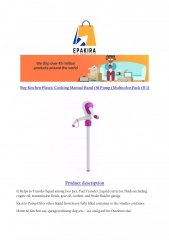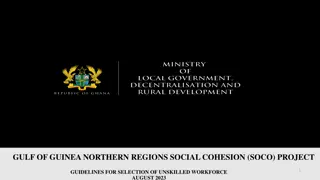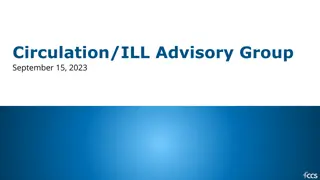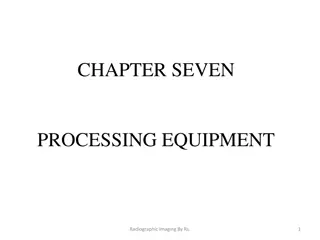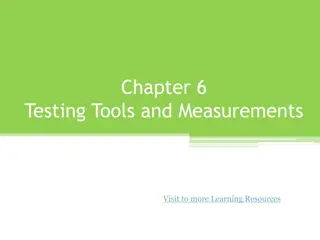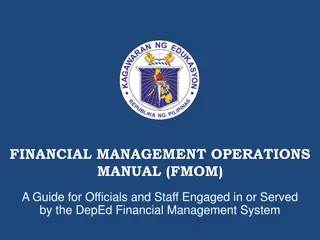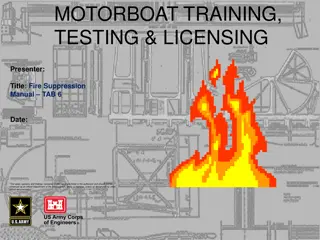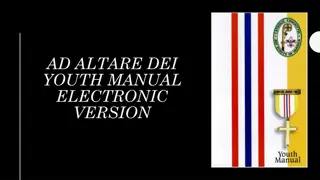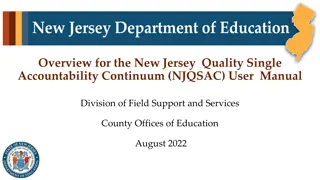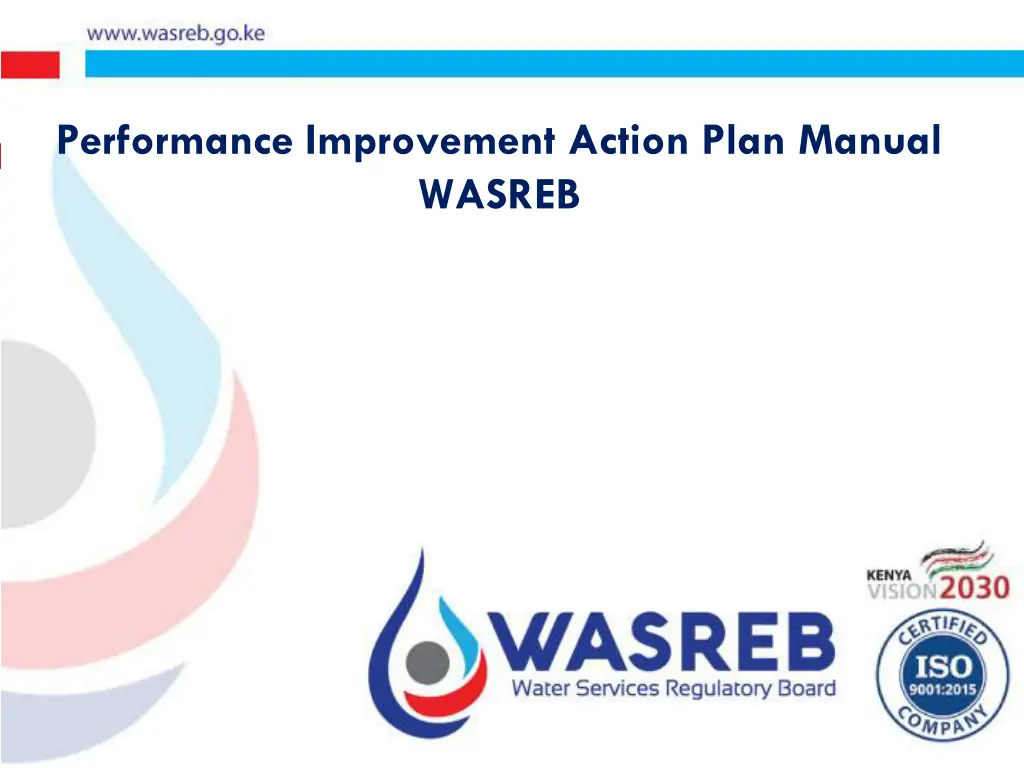
Manual for Performance Improvement Action Plan
This manual provides guidance on implementing a Performance Improvement Action Plan (PIAP) to assess Water Service Providers (WSPs) through Key Performance Indicators (KPIs), propose interventions, prioritize actions, and forecast performance improvements. It enables monitoring of WSPs' progress towards targets, enhances service levels, reduces Non-Revenue Water (NRW), and ensures regulatory compliance. The PIAP tool extends over 6 years, includes long-term investments, covers non-financial factors like governance and HR practices, and supports comprehensive utility improvement. Steps include WSP overview, indicator diagnosis, diagnostic analysis, intervention selection, and prioritization to drive utility performance enhancements.
Download Presentation

Please find below an Image/Link to download the presentation.
The content on the website is provided AS IS for your information and personal use only. It may not be sold, licensed, or shared on other websites without obtaining consent from the author. If you encounter any issues during the download, it is possible that the publisher has removed the file from their server.
You are allowed to download the files provided on this website for personal or commercial use, subject to the condition that they are used lawfully. All files are the property of their respective owners.
The content on the website is provided AS IS for your information and personal use only. It may not be sold, licensed, or shared on other websites without obtaining consent from the author.
E N D
Presentation Transcript
Purpose of the PIAP 14 Main Purpose is to diagnose the WSP through KPIs, propose and prioritize interventions, and forecast improvement in performance Examines interventions proposed by utilities Allows WASREB to track WSPs progress toward performance targets especially OCCR and Ensure regulatory compliance Improves service levels, reduces NRW, and enhances sustainability
Background of the PIAP Origin (FRP) PIAP New excel tool extends to 6 years and includes long-term investments and 6-year projections Originated from Financial Recovery Planning (FRP) tool after COVID-19 FRP focused on 12- month short-term recovery
Key Enhancements in the PIAP tool Planning horizon extended to 6 years Inclusion of capital investments Covers non-financial factors (e.g., governance, HR practices) Supports comprehensive utility improvement (Indicators drawn from CWI).
Step 1 & 2 WSP Overview & Indicator Diagnosis STEP 1 WSP OVERVIEW SNAPSHOT OF REVENUES, COSTS, SERVICE AREA, & STATUS OF REGULATORY COMPLIANCE STEP 2:INDICATOR DIAGNOSIS INPUT KEY PERFORMANCE DATA FOR ASSESSMENT: COMMERCIAL, FINANCE, TECHNICAL ETC (COLLECTS 5 YEAR HISTORICAL DATA)
Step 3 Diagnostic &Root Cause Analysis Based on historical data, utilities Identify and evaluate indicators that are worst preforming E.g. NRW, Energy Efficiency etc. Pinpoint performance gaps for intervention focus
Step 4 & 5 Intervention Selection and Prioritization Step 4: Based on Worst performing KPIs, Utility proposes interventions, their costs and expected payback period (calculated as total cost of intervention/ the annual increase in revenue or reduction in cost as result of the intervention) Step 5: The utilities then prioritize intervention based on their payback period with utilities beginning with interventions with lowest payback period.
Step 6: Intervention Impact Analysis OCCR Step 6: Based on the order prioritized interventions, utilities project their impact on revenues, costs, and cash flow. These interventions may lead to cost reductions, increased revenues, or improved bill collection efficiency. 120% 109% 106% 102% 98% 100% 94% 86% 86% 86% 86% 86% 86% 80% 60% 40% The tool then projects Operational cost coverage for the utility for 6yrs 20% 0% 2026 2027 2028 2029 2030 2031 Business-as-usual OCCR With Intervention OCCR
STEP 7: Progress Tracker Input : project budgets, timelines, and responsible persons Promotes clear planning and execution accountability Independent assessment conducted annually for achievement of OCCR targets by WASREB through validated data
Risks and Mitigation of using the PIAP tool RISK MITIGATION Inaccurate historical data Verify against published data Use payback period. Start with low hanging fruits Wrong Prioritization of intervention Overestimation or underestimation of Impact of interventions Compare against similar interventions in other utilities

